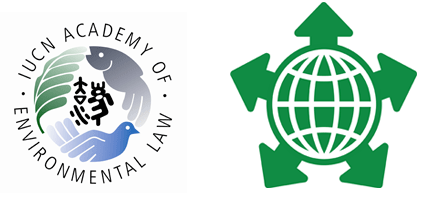Event Title
Into the Great Wide Open: Geoengineering and the Relevance of International Human Rights Law
Location
Room 302
Start Date
4-7-2012 1:15 PM
End Date
4-7-2012 2:45 PM
Description
According to recent analyses by the World Resources Institute, Climate Analytics, and the WWF, the pledges made by parties to the United Nations Framework Convention on Climate Change (UNFCCC) pursuant to the Copenhagen Accord developed at COP15 put the world on course for temperature increases of 3-3.9C above pre-industrial levels by 2100. This could have disastrous consequences for human institutions and natural ecosystems, including massive sea level rise, eradication of coral reefs throughout the world, and potentially catastrophic declines in agricultural production, especially in the global South. As a consequence, increasing attention has been devoted to a series of potential responses that were once considered “taboo,” and “forbidden territory,” climate geoengineering. Climate geoengineering is defined by the National Academy of Sciences as “options that would involve large-scale engineering of our environment in order to combat or counteract the effects of changes in atmospheric chemistry.” These methods include ocean iron fertilization, marine cloud albedo enhancement, stratospheric sulfate injection, air capture, and the use of planetary sunshades, all of which have the potential to substantially ameliorate, or reverse, current warming trends. At the same time, all of these schemes could have serious negative ramifications, including adverse regional impacts with momentous equitable implications, e.g. disruption of monsoonal cycles or increases in regional temperature trends, as well as potential global impacts, e.g. depletion of the ozone layer.
While geoengineering was once considered to be “taboo” in the forum of climate change policymaking, the increasing desperation engendered by the specter of passing critical temperature thresholds has led to increasing interest in the approach, including by key stakeholders, such as the U.S. Congress and U.K. Parliament, the UK’s Royal Society, and the U.S. National Academy of Science. Even President Obama’s chief science advisor has indicated that geoengineering should “not be taken off the table” as a potential component of climate policymaking.
As a potential embrace of climate geoengineering becomes more likely, the need for effective governance mechanisms for research and development, as well as potential deployment is emerging as an urgent priority. This is a quintessential example of “Global Environmental Law at a Crossroads,” as geoengineering will present immense challenges in adapting current international environmental law to consider potential issues such as constraining of unilateral deployment and potential liability mechanisms, as well as developing new instruments to fill in lacunae.
This presentation suggests that any governance mechanisms developed in the future should take into account the procedural and substantive protections accorded by international human rights law instruments. The presentation will outline why a human rights lens is particularly salutary in the context of geoengineering governance, as well as outlining specific pertinent provisions of international and regional instruments. Additionally, the presentation will address problems in applying a human rights approach in this context, including causality and extraterritorial application of human rights instruments.
Into the Great Wide Open: Geoengineering and the Relevance of International Human Rights Law
Room 302
According to recent analyses by the World Resources Institute, Climate Analytics, and the WWF, the pledges made by parties to the United Nations Framework Convention on Climate Change (UNFCCC) pursuant to the Copenhagen Accord developed at COP15 put the world on course for temperature increases of 3-3.9C above pre-industrial levels by 2100. This could have disastrous consequences for human institutions and natural ecosystems, including massive sea level rise, eradication of coral reefs throughout the world, and potentially catastrophic declines in agricultural production, especially in the global South. As a consequence, increasing attention has been devoted to a series of potential responses that were once considered “taboo,” and “forbidden territory,” climate geoengineering. Climate geoengineering is defined by the National Academy of Sciences as “options that would involve large-scale engineering of our environment in order to combat or counteract the effects of changes in atmospheric chemistry.” These methods include ocean iron fertilization, marine cloud albedo enhancement, stratospheric sulfate injection, air capture, and the use of planetary sunshades, all of which have the potential to substantially ameliorate, or reverse, current warming trends. At the same time, all of these schemes could have serious negative ramifications, including adverse regional impacts with momentous equitable implications, e.g. disruption of monsoonal cycles or increases in regional temperature trends, as well as potential global impacts, e.g. depletion of the ozone layer.
While geoengineering was once considered to be “taboo” in the forum of climate change policymaking, the increasing desperation engendered by the specter of passing critical temperature thresholds has led to increasing interest in the approach, including by key stakeholders, such as the U.S. Congress and U.K. Parliament, the UK’s Royal Society, and the U.S. National Academy of Science. Even President Obama’s chief science advisor has indicated that geoengineering should “not be taken off the table” as a potential component of climate policymaking.
As a potential embrace of climate geoengineering becomes more likely, the need for effective governance mechanisms for research and development, as well as potential deployment is emerging as an urgent priority. This is a quintessential example of “Global Environmental Law at a Crossroads,” as geoengineering will present immense challenges in adapting current international environmental law to consider potential issues such as constraining of unilateral deployment and potential liability mechanisms, as well as developing new instruments to fill in lacunae.
This presentation suggests that any governance mechanisms developed in the future should take into account the procedural and substantive protections accorded by international human rights law instruments. The presentation will outline why a human rights lens is particularly salutary in the context of geoengineering governance, as well as outlining specific pertinent provisions of international and regional instruments. Additionally, the presentation will address problems in applying a human rights approach in this context, including causality and extraterritorial application of human rights instruments.

